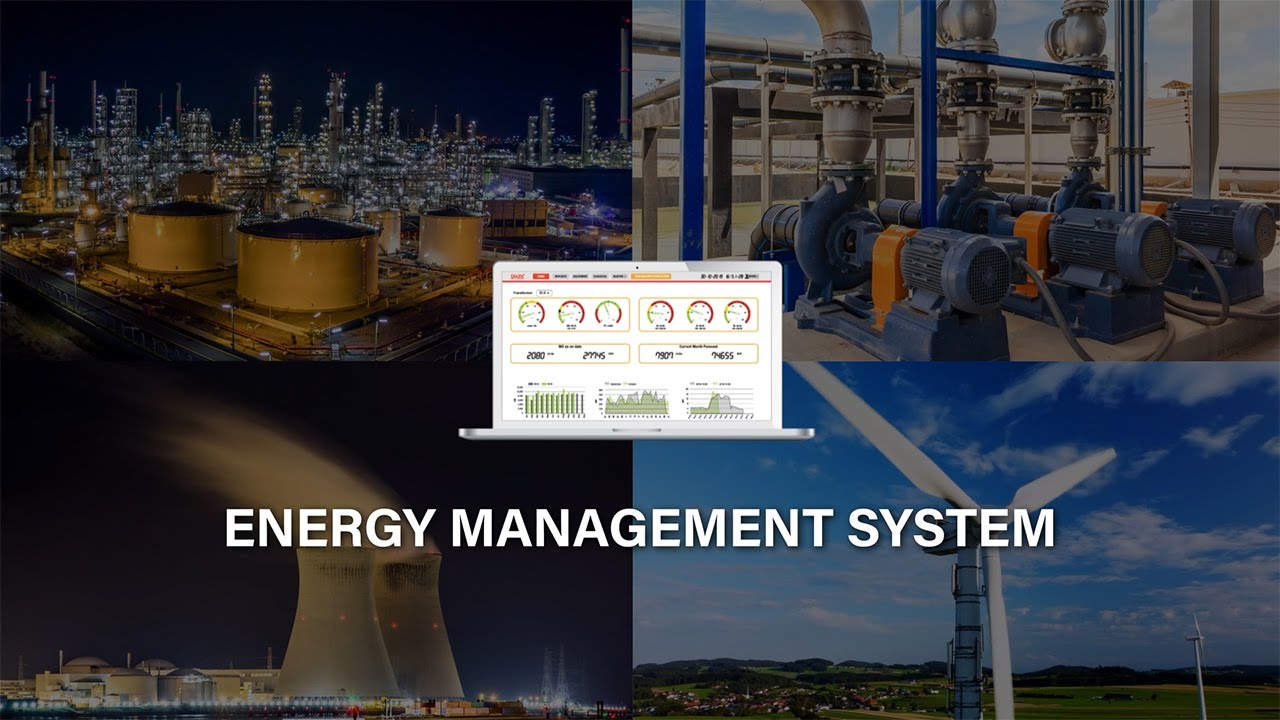Top 5 Energy Monitoring Systems for Commercial Buildings (2026 Edition)
Energy monitoring is now mission-critical for facility managers, energy consultants, and MEP contractors aiming to slash costs and meet sustainability targets. The 2026 lineup of top energy monitoring systems spans whole-building solutions, granular circuit-level monitors, and submetering platforms — all U.S.-available with commercial support. We evaluated each on a 60-point scale (1–10 points per category) across these criteria:
- Metering Versatility & Accuracy (whole-building, branch-circuit, pulse inputs, revenue-grade precision)
- Platform Software & Visualization (dashboards, alerts, mobile/cloud access, analytics)
- Integration & Interoperability (BAS/BMS/SCADA protocols like BACnet, Modbus, MQTT; open APIs; utility/demand response links)
- Reporting & Compliance (ENERGY STAR Portfolio Manager sync, LEED/WELL support, data exporting for ESG)
- Scalability & Deployment (multi-site management, retrofit options, installer tools, onboarding ease)
- Value for Commercial Use (cost-to-benefit ratio, licensing model, feature depth for price)
Each solution below includes a score breakdown, key features, ideal building applications, pros and cons, and a link to the official product page. Let’s dive into the 2026 winners for offices, campuses, retail chains, hotels, mixed-use portfolios, industrial facilities and more.
🥇 Schneider Electric EcoStruxure Energy Hub (Total: 58/60)
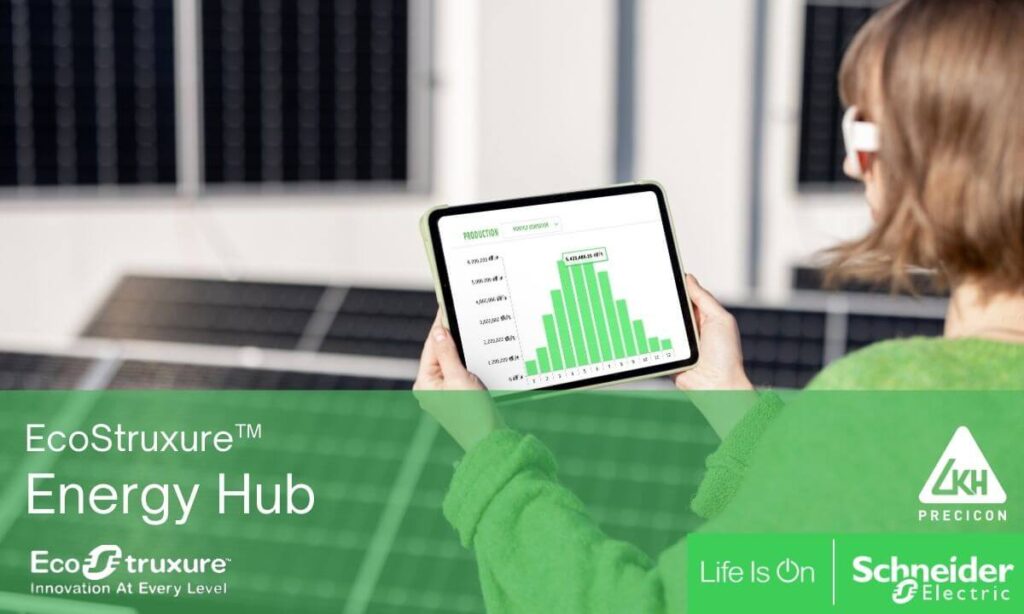
Manufacturer: Schneider Electric – Cloud-based Energy Management SaaS
Overview: Schneider’s EcoStruxure Energy Hub is a comprehensive building energy management platform that combines enterprise-grade metering hardware (PowerLogic meters, wireless sensors, etc.) with a user-friendly cloud software suite. It provides real-time visibility into whole-building consumption and branch circuits, delivering actionable insights and even energy-saving recommendationssmartbuildingsmagazine.com. Designed for simplicity, it automatically collects, stores, visualizes, and reports on energy data for single buildings or portfoliossmartbuildingsmagazine.com. Energy Hub supports revenue-grade metering and can pull in not just electrical data but also water, gas, and environmental sensor inputs for a holistic viewsustainabilitymag.com.
Crucially, Schneider scores top marks in integration – the platform is vendor-agnostic, interfacing with third-party meters, intelligent breakers, BAS controllers and sensors via native BACnet, Modbus, and REST API supportsustainabilitymag.com. This means it drops seamlessly into existing Building Management Systems (or works standalone) to aggregate all energy points. Energy Hub’s dashboard and analytics are accessible via web and mobile app, with multi-site benchmarking and notifications for anomalies. On the compliance front, Schneider has aligned the system with sustainability programs – it can generate LEED-friendly reports (University of Denver uses it to meet LEED Platinum standardssmartbuildingsmagazine.com) and simplifies ENERGY STAR benchmarking (Schneider offers automated Portfolio Manager sync through its Resource Advisor suiteperspectives.se.com). The platform is scalable from a single facility to global portfolios, making it popular in commercial real estate, industrial campuses, hospitals, and data centerssustainabilitymag.com.
Score Breakdown (out of 10):
- Metering Versatility & Accuracy: 10 – Supports main feeds, submeters, branch circuits; ANSI 0.2% class meters available.
- Platform Software & Visualization: 10 – Intuitive cloud UI with real-time dashboards, AI insights, and mobile accesssmartbuildingsmagazine.com.
- Integration & Interoperability: 10 – Built on open protocols (BACnet IP/SC, Modbus TCP) and APIs; connects Schneider and 3rd-party devices seamlesslysustainabilitymag.com.
- Reporting & Compliance: 9 – Provides automated reports and sustainability benchmarking (LEED credits, etc.)smartbuildingsmagazine.com; ENERGY STAR data export (full integration via Schneider Resource Advisor)perspectives.se.com.
- Scalability & Deployment: 10 – SaaS model scales to portfolios; quick retrofit installs (IoT sensors); suitable for single buildings, campuses, or enterprisessmartbuildingsmagazine.com.
- Value for Commercial Use: 9 – High upfront quality and feature set; offers strong ROI up to 30% energy savings in deploymentssustainabilitymag.com, though premium hardware costs can raise payback period.
Ideal for: Large office buildings and campuses, universities, industrial facilities, healthcare complexes, data centers – especially where a mix of whole-building and detailed circuit monitoring is needed for energy and carbon management.
Pros:
- Comprehensive metering solution (from utility mains to individual circuits) with rich analyticssmartbuildingsmagazine.com.
- Strong integration into existing BAS/BMS and IoT ecosystems (native BACnet/Modbus, third-party device support)sustainabilitymag.com.
- Cloud platform with multi-site oversight; automatic updates and minimal IT burden.
- Supports compliance with green building programs (LEED, local energy ordinances) and offers energy savings guidance.
Cons:
- Premium solution – hardware and licensing costs are higher, which may be overkill for very small facilities.
- Some advanced features (like automated ENERGY STAR sync) may require Schneider’s broader software suite or services.
- Primarily focused on electrical energy; water/gas tracking is supportedsustainabilitymag.com but not as advanced as power analytics.
Product Page: Schneider Electric EcoStruxure™ Energy Hub
🥈 Siemens SIMATIC Energy Manager PRO (Total: 56/60)
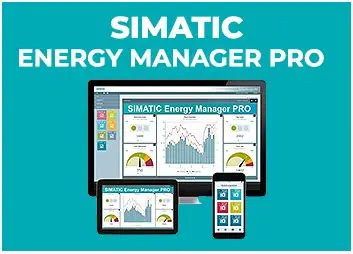
Manufacturer: Siemens – Industrial-Grade Energy Management Software
Overview: Siemens’ SIMATIC Energy Manager PRO brings industrial-strength energy analytics into commercial buildings. Originally built for factories and large plants, it excels at providing high-resolution transparency into energy usage “from machinery, production lines and full facilities, whether locally or across the globe”sustainabilitymag.com. This platform is certified for ISO 50001 energy management and is renowned for its accuracy and breadth – it aggregates data from utility mains down to equipment-level meters, including production machines, HVAC units, and any sensor that can report energy. SIMATIC Energy Manager integrates effortlessly with Siemens automation gear (e.g. PLCs and metering devices) and third-party hardware, yielding a vendor-independent view of a building’s energy distributionsustainabilitymag.comsustainabilitymag.com. It supports standard protocols (Modbus, OPC UA, etc.) and can import data from building systems or IoT sensors via gateways, though its sweet spot is in sites that already leverage Siemens control systems.
The platform’s software is highly robust: a widget-based dashboard for detailed asset-level analysis allows users to slice energy data by area, process, or time periodsustainabilitymag.com. Advanced analytics (forecasting, load profiling, regression analysis) are built in, helping both day-to-day optimization and long-term strategic planning. Integration & Interoperability is a standout – SIMATIC Energy Manager connects with Siemens’ MindSphere cloud and other IoT hubs for enterprise-wide data accesssustainabilitymag.com. It also outputs data to SCADA or other databases, enabling integration with existing BAS/BMS or sustainability reporting tools. On compliance, it offers out-of-the-box reports for standards like ISO 50001 and can support data for ESG disclosures, though it’s more of an engineering tool than a turnkey ESG platform.
This system is extremely scalable and has been proven in demanding environments – for example, Siemens used it at its Fürth electronics plant to reduce energy use by 64% and earn World Economic Forum recognitionsustainabilitymag.comsustainabilitymag.com. In commercial contexts, SIMATIC is ideal for industrial parks, R&D campuses, large hospitals or any site with energy-intensive operations requiring granular monitoring and tight process integration.
Score Breakdown (out of 10):
- Metering Versatility & Accuracy: 10 – Monitors everything from whole-building utility feeds to individual machines with industrial-grade accuracy; supports electric, gas, water, steam metering (expandable I/O).
- Platform Software & Visualization: 9 – Highly customizable dashboards and analysis tools (Sankey diagrams, KPI tracking). Geared toward power users; extremely powerful but initial setup can be complex.
- Integration & Interoperability: 10 – Integrates with Siemens and non-Siemens devices for a “vendor-independent perspective”sustainabilitymag.com; compatible with OPC UA, Modbus, BACnet (via gateway), and cloud APIs (MindSphere).
- Reporting & Compliance: 9 – Certified for ISO 50001 compliance; generates audit reports and energy performance indicators. Lacks one-click ENERGY STAR uploads, but data can be exported for any reporting need.
- Scalability & Deployment: 10 – Designed for enterprise scale: handles global multi-site data consolidationsustainabilitymag.com; can be deployed on-premises or in cloud VMs; supports thousands of measurement points.
- Value for Commercial Use: 8 – Exceptional capability for large operations; however, licensing and implementation are costly and better suited to big campuses or industrial facilities rather than small buildings.
Ideal for: Manufacturing plants, industrial campuses, large universities or research facilities, and energy-intensive commercial buildings (labs, high-tech campuses) that need deep integration with process controls and high-level energy optimization.
Pros:
- Industrial-strength monitoring with granular visibility down to equipment level; ideal for complex facilities with many energy streamssustainabilitymag.com.
- Seamless integration with automation/SCADA systems – can tie directly into production controls to link energy and operational datasustainabilitymag.com.
- Supports enterprise cloud integration (Siemens MindSphere) for fleet-wide analytics and IoT-based insightssustainabilitymag.com.
- Highly configurable analytics and dashboards, enabling detailed energy breakdowns and what-if analyses for energy projects.
Cons:
- Steeper learning curve and setup effort; best implemented with a Siemens integrator – may be overkill for simpler commercial buildings.
- User interface is powerful but less modern/glossy than some newer cloud-native tools (it’s evolving, with web clients now available).
- Not focused on out-of-box ESG or benchmarking features (more engineering-oriented); users must configure exports to tools like Portfolio Manager manually.
- Higher cost structure (enterprise software license + possible Siemens PLC hardware) which is justified for large-scale savings, but not for small sites.
Product Page: Siemens SIMATIC Energy Manager PRO
🥉 Johnson Controls Metasys Building Automation System (w/ Energy Analytics) (Total: 54/60)
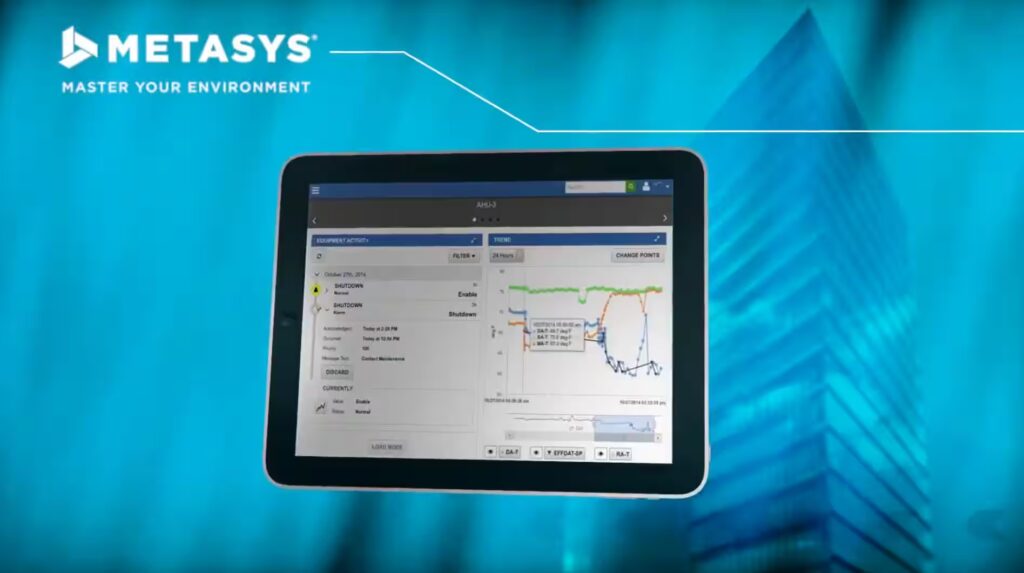
Manufacturer: Johnson Controls – BAS with Integrated Energy Management
Overview: Metasys is a flagship Building Automation System (BAS) that has long been the nerve center for HVAC, lighting, and security in commercial buildings. In its latest iterations (v14+), Johnson Controls has supercharged Metasys with native energy monitoring and analytics capabilities, effectively turning it into an energy management system as wellprnewswire.com. Metasys earns its spot here for its unparalleled integration depth: it can unify data from electricity, gas, and water meters with HVAC operations in one platformaemaco.com. The system’s new Energy Dashboard provides real-time consumption tracking and reporting by building, floor, or even room, helping facility teams pinpoint inefficiencies and optimize schedulesprnewswire.com. Users can quickly deploy preconfigured energy dashboards that visually display and report on energy usage by space, enabling identification of waste without needing separate add-onsprnewswire.com.
Where Metasys really shines is interoperability. As a BAS, it natively supports BACnet/IP (and the new BACnet/SC secure standard), plus Modbus TCP and other protocols for device integrationprnewswire.com. In fact, Metasys 14 introduced a BACnet Client capability at the server level, allowing it to directly communicate with any BACnet field device on the networkprnewswire.com – no intermediary gateways needed. This means it can pull in data from third-party smart meters, VFDs, generators, etc., and incorporate those into its control and monitoring routines. The architecture supports up to 800 IP devices on one server (and more with multiple servers), illustrating strong scalabilityprnewswire.com. For multi-site portfolios, Johnson Controls offers their OpenBlue cloud platform to aggregate data from Metasys across sites, with ENERGY STAR benchmarking tools, although that may be outside the base Metasys installation.
Metasys continues to prioritize occupant comfort and facility operations, so its energy features are designed to optimize HVAC and lighting in tandem with energy goals. For example, using analytics, a building manager can see an Energy Dashboard flag for abnormal after-hours energy use on a certain floor, and directly adjust schedules or send commands to equipment within the same interface. The system is proven in tens of thousands of buildings (from high-rises to hospitals) and is known for reliability and rich features.
Score Breakdown (out of 10):
- Metering Versatility & Accuracy: 9 – Can integrate virtually any meter (electric, gas, water, thermal) via BACnet/Modbus, but relies on those external devices for accuracy (JCI offers UL-rated meters as add-ons). Excellent at consolidating multi-utility data in one placeaemaco.comaemaco.com.
- Platform Software & Visualization: 9 – Modern web-based UI (since Metasys 11+) with customizable dashboards. Energy data is embedded alongside alarms, trends, and controls, offering a unified operations view. The interface is much improved, though not as specialized as some dedicated energy software.
- Integration & Interoperability: 10 – Market-leading integration: supports BACnet/IP, BACnet/SC, LonWorks (legacy), Modbus, KNX, and has APIs. Metasys can now directly communicate with networked devices over BACnet/SC for secure, seamless integrationprnewswire.comprnewswire.com. Also compatible with MQTT and other IoT integrations via the JCI API.
- Reporting & Compliance: 8 – Strong on internal reporting (energy by space, trend logs, CSV exports). Johnson Controls also provides connectors to sync data with ENERGY STAR Portfolio Manager and other compliance tools, but these may require the OpenBlue cloud or additional modules. LEED and WELL data points can be tracked, but Metasys doesn’t automatically generate certification reports.
- Scalability & Deployment: 10 – Highly scalable from a single building to a campus. A single Metasys server can handle hundreds of devices and thousands of pointsprnewswire.com; enterprise architectures allow multi-site integration via cloud. Well-suited for retrofits in older buildings (supports phased upgrades and bridging to legacy systems).
- Value for Commercial Use: 8 – As a BAS, Metasys delivers wide functionality (beyond energy) which can justify its cost in large facilities. For pure energy monitoring needs, it’s a significant investment in software, servers, and possibly licensing. However, the dual benefit of energy + total building control yields strong value in complex buildings.
Ideal for: Office towers, hospitals, university campuses, government and military facilities, any large building with a BAS that wants integrated energy management. Metasys is especially useful when controlling and optimizing HVAC and lighting systems is part of the energy-saving strategy (e.g. adjusting setpoints in response to demand peaks).
Pros:
- Comprehensive building integration: energy monitoring is built into the same platform that runs HVAC, lighting, security, etc., enabling unified control strategies (e.g. shedding loads during peak demand)prnewswire.com.
- Robust protocol support and device capacity – Connects to hundreds of meters and sensors; now with direct BACnet client capabilities and support for BACnet Secure Connect for cybersecurityprnewswire.com.
- Improved analytics tools: out-of-the-box energy dashboards, trends, and fault detection help identify inefficiencies and performance issues quicklyprnewswire.com.
- Proven reliability and support network; JCI offers extensive support, training, and a large integrator network in the U.S.
Cons:
- Requires a JCI Metasys installation – for those without an existing BAS, deploying Metasys just for energy tracking is a large undertaking. It’s ideal when you also need building automation upgrades.
- The user interface, while modernized, is still catching up to the slickness of some newer cloud-only energy apps. Some tasks (like custom report design) can be complex.
- Costly licensing for software and ongoing service; scaling to enterprise may require JCI’s cloud services (OpenBlue) which add subscription costs.
- Primarily focused on facility internal use; advanced sustainability reporting or multi-portfolio comparisons might require exporting data to external analytics tools.
Product Page: Johnson Controls Metasys BAS
4️⃣ Honeywell Forge – Carbon & Energy Management (Total: 55/60)
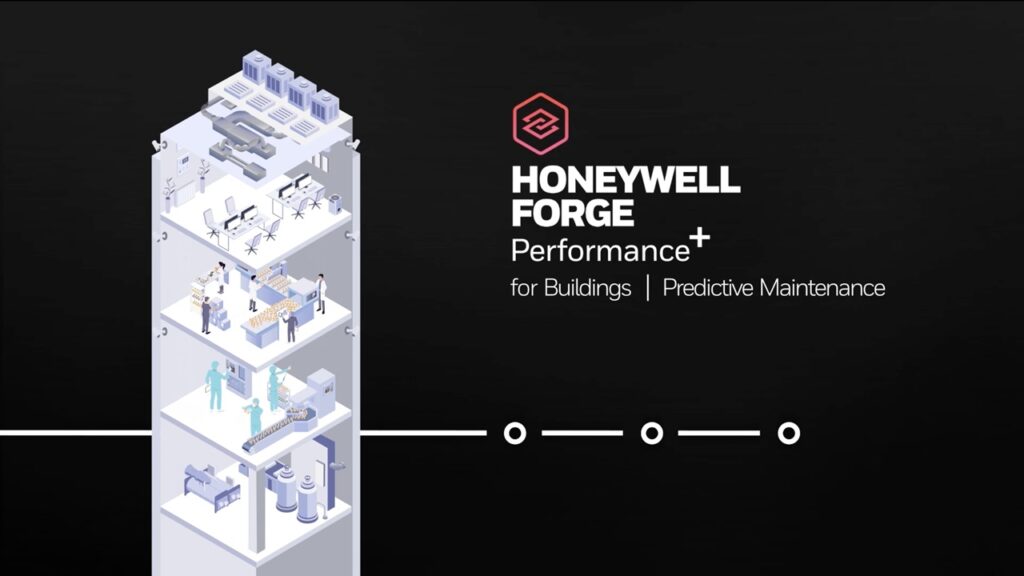
Manufacturer: Honeywell – Cloud Sustainability Platform for Buildings
Overview: Honeywell Forge for Buildings is an enterprise-level platform combining IoT hardware, cloud analytics, and actionable dashboards to drive sustainability in large building portfolios. The Carbon & Energy Management module of Forge is a powerful energy monitoring system tailored for multi-site operations, focusing equally on energy reduction and indoor air quality optimizationhoneywell.comhoneywell.com. This solution excels at aggregating data from siloed sources – it integrates utility meters, submeters, BAS data, and even utility bill information to give a comprehensive view of energy performance across sitesscribd.com. In fact, Honeywell Forge Sustainability+ (Carbon & Energy) can pull in Scope 1 and 2 emissions data, manage utility bills (including tenant sub-billing), and comes with ENERGY STAR® Portfolio Manager integration for automated benchmarkingscribd.com. These features simplify compliance with ESG frameworks and building standards, as the system can track and help improve ENERGY STAR scores and generate reports for LEED or WELL requirements.
Honeywell places a big emphasis on using data for actionable control. Forge’s energy module doesn’t just monitor – it can interface with building controls to adjust HVAC setpoints or schedules in real-time based on occupancy, demand response events, or air quality needshoneywell.com. The platform is vendor-agnostic, meaning it works with any existing BMS via open protocols or APIs, and can layer on top of sites with Honeywell or non-Honeywell automation. Deployment is typically via cloud, with edge devices or connectors streaming data upwards. The user interface is highly visual, offering portfolio dashboards, individual building drill-downs, and AI-driven alerts/recommendations (for example, flagging buildings with abnormal consumption or suggesting HVAC tune-ups to save energy).
Integration & Interoperability: Honeywell Forge supports common BAS protocols (usually by hooking into the BMS or data historian) and IoT standards. It also provides a robust API. The platform can connect to multiple asset types (HVAC, lighting, submeters) and is vendor-neutral, which is key for portfolios with mixed systemshoneywell.com. Honeywell often deploys edge adapters to gather data from BACnet or Modbus networks on-site and push to the cloud.
Score Breakdown (out of 10):
- Metering Versatility & Accuracy: 9 – Can incorporate data from whole-building meters, submeters, and other utilities. Honeywell’s own Wireless Energy Meters (formerly E-Mon) can be used for branch circuits. Data accuracy depends on connected devices, but the system handles everything from 15-minute interval data to real-time sensor readings.
- Platform Software & Visualization: 9 – Slick, web-based dashboards with map views for portfolios, trend charts, and KPI widgets. Includes AI/ML features for anomaly detection and optimization (especially balancing energy vs. IAQ). Mobile app access is available. Minor learning curve due to breadth of features.
- Integration & Interoperability: 9 – Connects to existing BMS/BAS via open protocols and to IoT sensors via MQTT/REST. Supports cloud-to-cloud integration (e.g., pulling utility data or weather). The system is largely vendor-agnostic, though deeper integration is easiest with Honeywell controllers.
- Reporting & Compliance: 10 – Strong compliance toolset: Built-in ENERGY STAR sync and score trackingscribd.com, support for LEED performance credits, and extensive reporting options (monthly energy reports, carbon footprint tracking). Helps with ESG reporting by consolidating emissions data automatically.
- Scalability & Deployment: 10 – Designed for multi-site scalability; proven in global portfolios (corporate HQs, retail chains, airports). Cloud deployment means new sites can be added quickly. Offers both portfolio-level and site-level management – perfect for enterprise usehoneywell.com.
- Value for Commercial Use: 8 – High value for organizations pursuing aggressive sustainability goals or operating many facilities (savings from optimized operations, demand response participation, and avoided carbon fees can be substantial). However, it’s a premium subscription service – cost-effective mainly at scale or when energy savings/ESG drivers are a priority.
Ideal for: Large enterprises and property portfolios – e.g. tech company campuses, national retail or banking chains, airports, healthcare systems. Also great for any building owner aiming for aggressive carbon reduction and needing a centralized ESG dashboard covering many sites.
Pros:
- Holistic energy and carbon management – merges real-time energy monitoring with utility billing, carbon tracking, and even IAQ metrics for a full sustainability picturescribd.com.
- Demand response and optimization ready: can automate adjustments (HVAC, lighting) to shed load or improve efficiency without sacrificing comforthoneywell.com. This directly helps reduce peak demand costs.
- Excellent for compliance and reporting: built-in ENERGY STAR integration (auto data sync)scribd.com, and supports LEED/WELL documentation, helping turn raw data into certification-ready formats.
- Scales to multi-site effortlessly; provides enterprise oversight with the ability to drill down to individual buildings. Cloud-based updates mean new analytics features are added regularly.
- Backed by Honeywell’s support and domain expertise in building controls – comes with advisory services if needed to interpret data and implement improvements.
Cons:
- Enterprise pricing – not cost-justified for small single buildings. Best suited when managing a portfolio or large complex; smaller clients might find it pricey relative to savings.
- Requires integration effort during setup (connecting to all sites’ systems and meters). While vendor-neutral, getting clean data from legacy systems can be a project. Honeywell often provides professional services to set it up.
- Some users may find the sheer breadth of data overwhelming at first; success depends on having staff engaged with the analytics or a service to act on the insights.
- Reliance on cloud: continuous internet connectivity is needed for full functionality (though edge devices maintain fail-safes for critical control). On-site only mode is not really an option for this product.
Product Page: Honeywell Forge Sustainability+ for Buildings – Carbon & Energy Management
5️⃣ GridPoint Energy Management Platform (Total: 51/60)
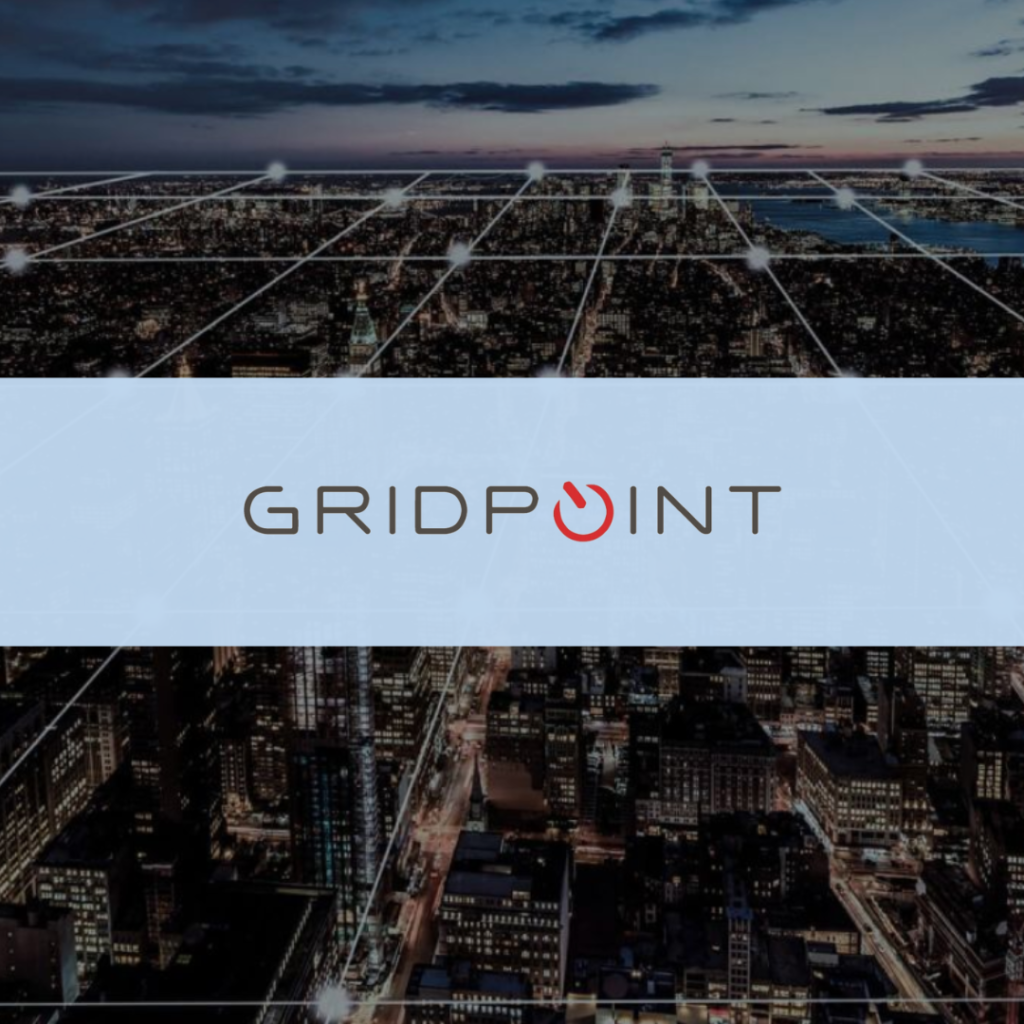
Manufacturer: GridPoint, Inc. – IoT-Based EMS for Small/Medium Commercial
Overview: GridPoint’s energy management system is a proven solution particularly popular in retail, restaurants, and other multi-site commercial portfolios that require a turn-key way to cut energy waste. The GridPoint platform combines asset-level submetering, monitoring, intelligent controls, and cloud analytics to yield up to 30% energy savings with quick paybackgridpoint.com. What sets GridPoint apart is its focus on versatility and ease of deployment in existing buildings: it uses a mix of hardware – IoT sensors, control modules for HVAC and lighting, and small meters – which are all tied into a cloud platform for analytics and remote management. For example, a chain store can install GridPoint’s devices on its HVAC units, freezers, and main electric panel; the system will then provide real-time energy data, equipment health alerts, and even perform automated HVAC scheduling and demand response actions.
GridPoint’s software offers a unified dashboard for all sites, with the ability to drill down into a single location’s performance or manage settings across the fleet. It excels at alerts and analytics for equipment: detecting anomalies like an HVAC unit short-cycling or a walk-in cooler running warm, so facility managers can proactively service equipmentgridpoint.comgridpoint.com. Integration-wise, GridPoint has taken an open approach. It provides a Niagara AX connector and supports BACnet and Modbus protocols to interface with existing building control systemsgridpoint.com. This means if a site already has a Trane or Lennox controller, GridPoint can talk to it or at least ingest data from it via BACnet/IP or Modbus. The platform’s Open Connect API allows data exchange with third-party software as wellgridpoint.comgridpoint.com, making it possible to feed GridPoint data into enterprise dashboards or vice versa.
GridPoint has a significant U.S. presence – 12,000+ sites deployed including 6 of the top 10 retailers, major restaurant chains, and government facilitiesgridpoint.com. This speaks to its scalability and reliability in commercial operations. The scalability is more about managing many sites (each site is typically a smaller footprint like a store or restaurant) rather than handling thousands of devices in one building. For multi-site customers, GridPoint’s cloud makes it easy to compare locations, verify which ones are meeting energy goals, and identify outliers.
Score Breakdown (out of 10):
- Metering Versatility & Accuracy: 8 – Offers branch-circuit monitoring through wireless/current sensors and monitors whole-building load via CTs on mains. Devices are typically revenue-grade or close (sufficient for facility benchmarking, though not utility billing). It can also take in pulses from gas or water meters. Versatile across equipment types (HVAC, refrigeration, etc.), but may not cover extremely high-voltage industrial metering.
- Platform Software & Visualization: 9 – Clear, focused interface designed for busy facility managers: multi-site summary views, drill-down to asset trends, and easy scheduling control. Mobile-friendly alerts (text/email/app) keep users informedgridpoint.comgridpoint.com. Lacks some of the advanced analytics of bigger platforms but very practical and user-centric.
- Integration & Interoperability: 8 – Supports BACnet and Modbus integration on-site to tie into HVAC and other assetsgridpoint.com. Also has an API for enterprise integration. However, it’s not intended to integrate every device in a large building (it targets key assets), and doesn’t natively speak newer protocols like MQTT without custom setup.
- Reporting & Compliance: 7 – Provides standard energy reports and the data needed for ENERGY STAR benchmarking, but no automatic Portfolio Manager upload. Users can export data (CSV) for utility incentives or sustainability reports, but the platform’s focus is operational energy management rather than comprehensive ESG reporting.
- Scalability & Deployment: 9 – Very installer-friendly: wireless sensors and plug-and-play controllers make retrofit in occupied sites feasible with minimal disruption. Can manage thousands of sites in one cloud dashboard (used by national chains). For a single large building with complex systems, it may not capture everything, but for distributed portfolios it’s excellent.
- Value for Commercial Use: 10 – GridPoint is often praised for quick ROI: the combination of efficiency gains and demand charge reductions often pays back in under 2 yearsgridpoint.com. The solution’s modular nature lets customers start small and expand. Subscription costs and device prices are moderate, and utility incentives frequently help cover it.
Ideal for: Small to mid-size commercial buildings and multi-site portfolios – examples: retail stores, quick-service restaurants, branch banks, pharmacies, car dealerships, and light industrial facilities. It’s perfect if you have many similar sites and need a cost-effective way to monitor each and centralize control.
Pros:
- Turn-key energy management with quick deployment – minimal custom engineering required. Great for organizations without dedicated on-site energy staff at every location.
- Combines monitoring and control: not just passive data, but can actively adjust thermostats, lighting schedules, etc., to save energy automaticallygridpoint.comgridpoint.com.
- Proven savings and robust analytics on equipment health; helps transition maintenance from reactive to proactive by catching issues earlygridpoint.comgridpoint.com.
- Open integration approach: plays nicely with existing building systems (via Niagara, BACnet/Modbus)gridpoint.com, avoiding vendor lock-in. Data can be consolidated enterprise-wide – a big plus for large organizations.
- Strong support for multi-site management – one platform to oversee all locations, with benchmarking to identify which sites need attention.
Cons:
- Aimed at small/medium facility needs – in a single very large building with complex central plant systems, GridPoint might not provide the deep functionality of a dedicated BAS or a high-end EMS. It often works alongside a BAS in those cases, focusing on specific loads.
- Fewer advanced sustainability features (no native carbon tracking or certification modules). Data would need to be ported to other software for ESG reporting.
- Some limitations in customization – the system is standardized for ease; extremely unique sites may need custom solutions beyond GridPoint’s standard device kit.
- Reliant on cellular or internet connectivity at sites for real-time data; remote locations with poor connectivity might face challenges (though data caching mitigates short outages).
Product Page: GridPoint Energy Management (U.S.)
🧭 Which Energy Monitoring Platform Is Right for Your Building?
Choosing among these top-tier energy monitoring systems comes down to your facility’s size, complexity, and goals:
- For Large Complex Buildings or Campuses: Schneider Electric EcoStruxure Energy Hub and Johnson Controls Metasys shine. Schneider offers a dedicated energy focus with deep hardware integration (ideal for power distribution-intensive sites and sustainability reporting needs), whereas Metasys provides a holistic building automation approach – great if you want energy management and full HVAC/lighting control in one. Both support extensive integration; Schneider might edge out for pure energy analytics, while Metasys is a natural fit if you already use JCI for BAS.
- For Industrial or High Energy-Use Facilities: Siemens SIMATIC Energy Manager is purpose-built for industrial transparency and can handle heavy process integration. Choose this if ISO 50001 compliance, integration with production systems, or highly granular energy tracking is a priority. It’s the powerhouse for manufacturing plants, large data centers, and complex utilities within a facility.
- For Portfolio-Wide Sustainability Management: Honeywell Forge Carbon & Energy Management is the clear leader. If you operate dozens or hundreds of sites and need to drive a corporate ESG program (complete with ENERGY STAR scores, carbon tracking, and centralized optimization), Forge provides the enterprise-scale intelligence to do so. It’s an investment that pays off in energy savings and simplified reporting across your organization.
- For Multi-Site Small/Medium Buildings: GridPoint is often the smartest choice. It delivers 80% of the benefits with a fraction of the complexity for retail chains, restaurant franchises, and similar portfolios. Use GridPoint when you need a cost-effective, fast-deployment solution to wring out energy waste and don’t have on-site experts at every location. It’s also a good stepping stone for companies just beginning their energy management journey.
In many cases, these systems can complement each other. For instance, an office campus might use Schneider or Siemens at the central plant level, while deploying GridPoint or Honeywell Forge for tenant spaces or remote sites. Compatibility and integration are key – all the above solutions support open standards to ensure they can feed data into your Building Automation Systems, enterprise dashboards, or utility programs as needed.
Ultimately, the “best” energy monitoring system is the one that fits your unique operational needs and scales with your ambition. With any of these top 5 platforms, you’ll be equipping your facilities with 2026’s state-of-the-art tools to cut energy waste, lower operating costs, and hit those all-important sustainability targets. Here’s to smarter energy management and more efficient buildings ahead!
